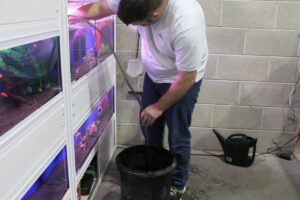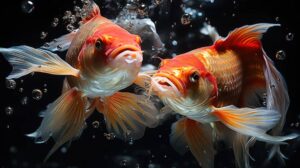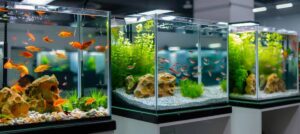The Pets Care Blog
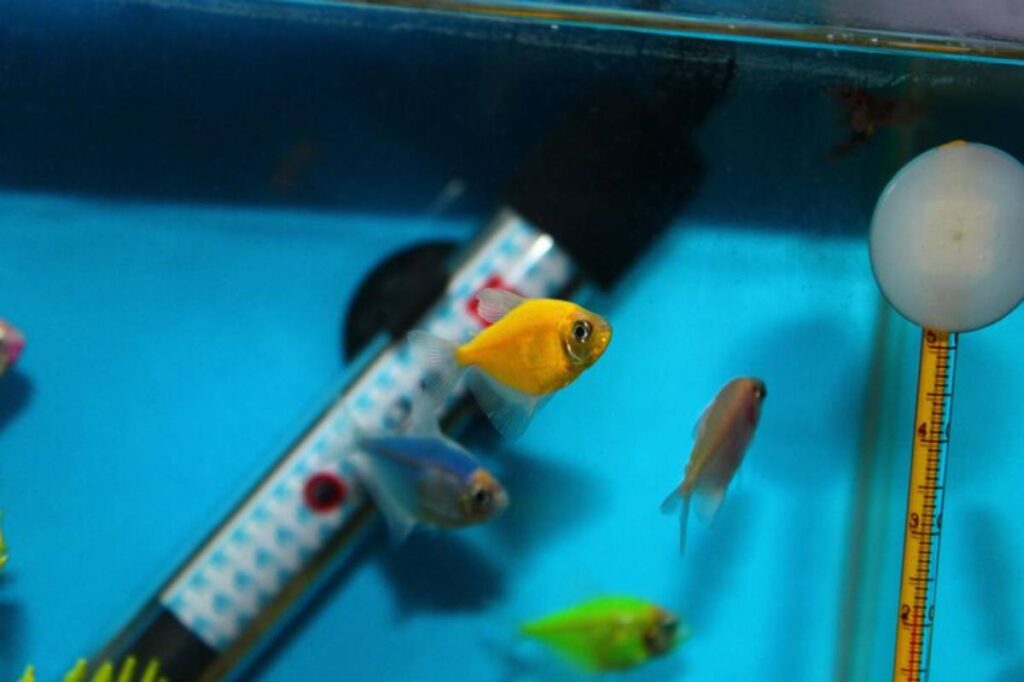
Ideal pH and Hardness Levels for Different Fish: A Practical Water Chemistry Guide
You’ve picked the perfect fish, set up a stunning tank, and added the right plants and decorations. But something’s still off — your fish aren’t thriving the way they should. They’re sluggish, hiding, or not eating much. Before you assume it’s a filter or feeding issue, take a look at something less visible your fish tank pH levels and aquarium water hardness.
Water chemistry isn’t just for advanced aquarists. It’s essential for all fishkeepers, especially if you want your fish to live long, stress-free lives. Each species comes from a natural habitat with specific water conditions. Replicating those conditions in your home tank can be the difference between survival and thriving.
In this detailed water chemistry guide, you’ll learn what pH and hardness mean, how to test and adjust them, and how to match your water parameters with the needs of your fish, whether you’re raising neon tetras or African cichlids.
What Do pH and Water Hardness Mean?
Let’s start with the basics. Understanding these two water parameters will help you create a healthier, more stable environment.
pH (Potential of Hydrogen)
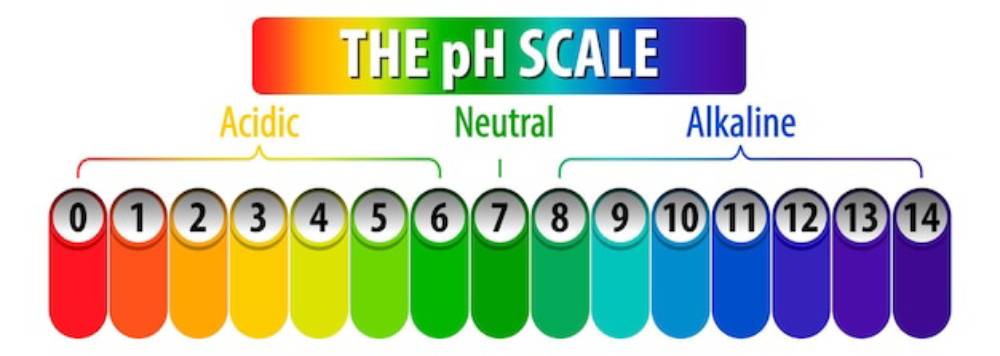
- Definition: Measures how acidic or alkaline the water is.
- Scale: 0–14 (7 is neutral)
- Below 7: acidic
- Above 7: alkaline
- Why it matters: pH affects how fish breathe, metabolise, and react to toxins. Even slight shifts can cause stress.
Water Hardness
This refers to the concentration of dissolved minerals in the water, primarily calcium and magnesium.
There are two types:
1. General Hardness (GH)
- Affects fish health, osmoregulation, and egg development.
- Influences how well fish absorb nutrients.
2. Carbonate Hardness (KH)
- Also called alkalinity.
- Stabilises pH levels and buffers against sudden swings.
Think of GH as your fish’s “mineral diet” and KH as the water’s “shock absorber.”
Why Water Chemistry Is Crucial for Fish Health
Fish are sensitive to water chemistry. Even hardy species can become stressed when kept in unsuitable pH or hardness levels. Here’s how poor water parameters impact your aquarium:
- Stress: Makes fish more prone to disease
- Poor digestion and growth: Minerals help with nutrient absorption
- Breeding problems: Some fish won’t breed outside their ideal range
- Filter bacteria disruption: pH affects the biological filtration process
Matching your fish’s natural habitat gives them the best chance at a healthy life.
Ideal pH and Hardness Ranges for Common Aquarium Fish
Below is a handy breakdown of ideal ranges for popular species. Always cross-check with your supplier or reputable species-specific guides.
| Fish Type | Ideal pH | Ideal GH (°dGH) | Ideal KH (°dKH) |
| Neon Tetras | 6.0–7.0 | 1–4 | 1–2 |
| Guppies | 7.0–7.8 | 8–12 | 10–15 |
| Angelfish | 6.5–7.0 | 3–8 | 3–8 |
| Mollies | 7.5–8.5 | 10–25 | 10–20 |
| Betta Fish | 6.5–7.5 | 3–5 | 3–5 |
| Goldfish | 7.0–8.0 | 8–12 | 5–10 |
| Platies | 7.0–8.3 | 10–28 | 10–20 |
| Discus | 6.0–6.8 | 1–4 | 1–3 |
| Zebra Danios | 6.5–7.2 | 5–12 | 3–8 |
| African Cichlids | 7.8–8.6 | 10–20 | 10–20 |
Note: °dGH and °dKH refer to degrees of general and carbonate hardness, respectively.
How to Test Fish Tank pH Levels and Hardness
Testing your water is simple with the right tools.
Tools You’ll Need:
- Digital pH meters (optional but precise)
- Liquid test kits (more accurate than strips)
- GH and KH test kits
Testing Steps:
- Collect a water sample mid-tank (avoid near filter output).
- Add the test reagent according to the kit instructions.
- Shake and wait as specified.
- Compare the colour result to the provided chart.
- Record your values — keep a water log to track stability.
Hack: Test your tap water, too. It helps you understand your water source baseline. For a detailed breakdown of testing steps, tools, and troubleshooting, see How to Test Aquarium Water Correctly.
How to Adjust pH and Water Hardness Safely
If your tank’s water chemistry doesn’t match your fish’s needs, don’t worry. Adjusting it is possible, but slow and steady wins the race. Sudden shifts can shock or kill fish.
Lowering pH (If Too High):
- Use driftwood or peat moss in the filter.
- Add Indian almond leaves (great for bettas).
- Use reverse osmosis (RO) water to dilute hardness.
- Avoid vinegar or harsh chemicals — they cause dangerous swings.
Raising pH (If Too Low):
- Add crushed coral or aragonite sand.
- Use baking soda (carefully, tiny amounts).
- Increase aeration to remove CO₂ (which lowers pH).
Increasing Hardness (GH/KH):
- Add mineral supplements (e.g. Seachem Equilibrium).
- Use crushed coral or limestone rocks.
- Top up with hard tap water if your source is mineral-rich.
Reducing Hardness:
- Use RO or distilled water mixed with tap water.
- Add catappa leaves or peat to soften slowly.
Always re-test after any adjustment and make changes over several days, not all at once.
How pH and Hardness Affect Other Aquarium Elements
Water chemistry doesn’t exist in a vacuum. It influences — and is influenced by — many factors in your tank.
1. Filtration
Beneficial bacteria that support your nitrogen cycle perform best at a stable pH between 6.5 and 8.0. Extreme pH swings can stall the cycle, causing ammonia or nitrite spikes.
If you’re new to this, check out our beginner’s guide on What is the Nitrogen Cycle and Why It Matters to get a full picture.
2. Plant Growth
Plants generally prefer soft to moderately hard water. Extremely hard water can cause nutrient lockout, leading to yellowing leaves.
3. Medication Effectiveness
Some aquarium medications work differently depending on pH. Always check product labels for ideal ranges.
Matching Fish to Your Water vs. Adjusting Water to Fish
Here’s a hot tip many beginner aquarists miss It’s often easier to choose fish that suit your existing water than constantly adjusting your water to suit a fish.
For example:

- Have hard, alkaline water? Go for guppies, mollies, or African cichlids.
- Soft, acidic water? Consider tetras, angelfish, or discus.
Adjusting water works, but requires ongoing monitoring. Matching fish to water simplifies your maintenance.
Common Mistakes to Avoid
Let’s save you time (and heartbreak) with these avoidable errors.
- Rapid pH shifts: Stressful and dangerous for fish
- Relying on test strips only: Often less accurate
- Over-relying on chemicals: Short-term fix, not long-term stability
- Skipping tap water tests: Know your starting point
- Mixing incompatible species: Avoid pH clashes
Taking the time to understand your water avoids most of these issues.
Conclusion: A Stable Tank Begins with Balanced Water Chemistry
Your aquarium might look beautiful on the outside, but the real magic — and the real risk — is in the water. Keeping the right fish tank pH levels and aquarium water hardness means more than just following numbers. It’s about creating an environment where your fish feel “at home,” stress-free, and healthy.
By learning your fish’s needs, testing regularly, and adjusting slowly when necessary, you’ll avoid common pitfalls and enjoy a much smoother fishkeeping experience.
So, what’s your water chemistry like today? Grab a test kit, log your results, and take that first step toward a healthier, more balanced tank. Got a question or a success story? Share it in the comments — we’d love to hear about your water chemistry journey.




